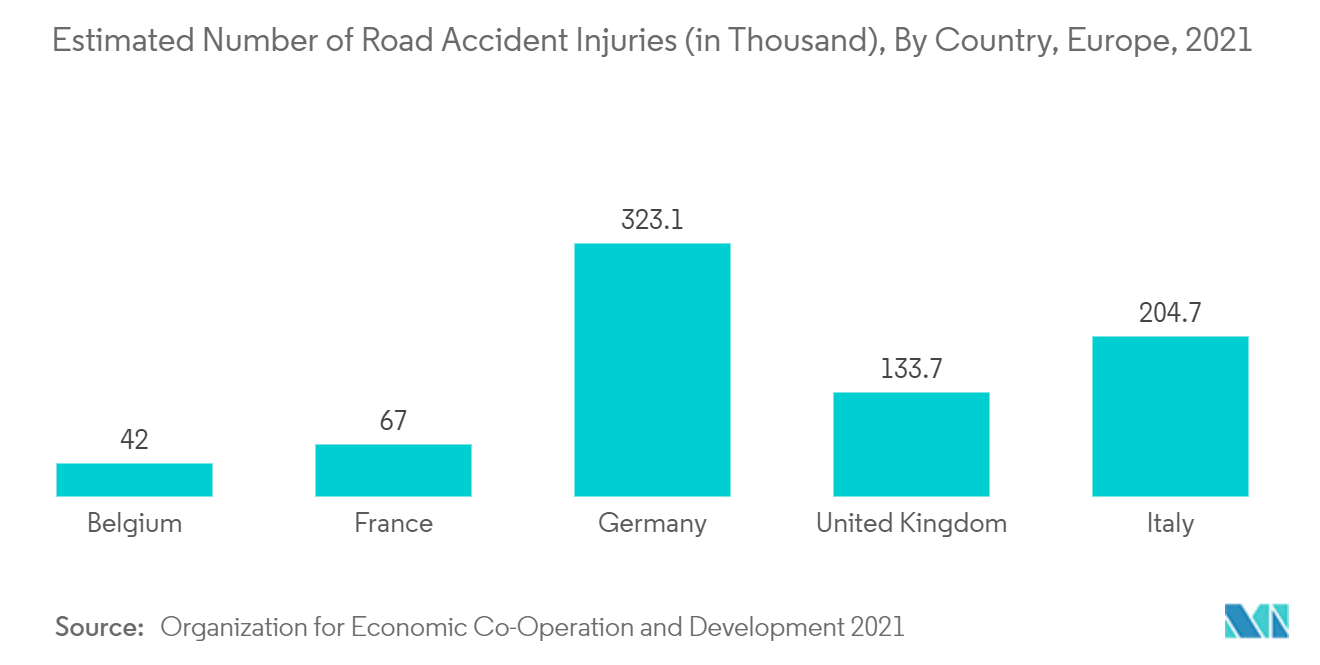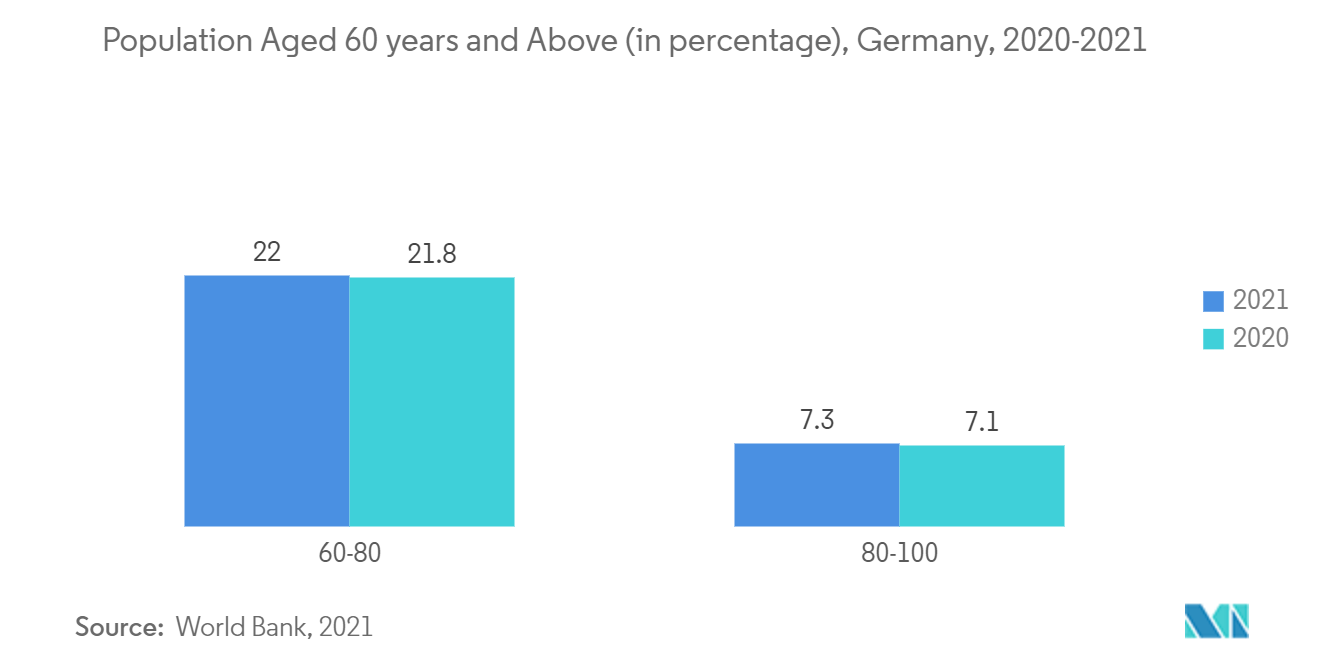Market Trends of Europe Healthcare 3D Printing Industry
This section covers the major market trends shaping the Europe Healthcare 3D Printing Market according to our research experts:
Metal and Alloy Segment is Dominating the European Healthcare 3D Printing Market Over the Forecast Period
Titanium alloy and pure titanium are the most preferred and biocompatible metallic materials for biomedical implants. A wide variety of biomaterials, such as metals and alloys, hydrogels, and polymeric biomaterials based on them, have been used and developed as inks for creating 3D structures with a wide range of sizes and stiffness.
As per an article published in the International Journal of Molecular Sciences in August 2021, the titanium osteosynthesis plate produced by milling methods is considered the gold standard. The use of customized titanium plates produced with 3D printing, specifically direct metal laser sintering become more popular in recent years. Titanium alloys like Ti6Al4V improve strength and have corrosion resistance. On the whole, titanium is one of the most widely adopted metals for 3D printing for medical applications. Hence, the advantages of metal and alloy are expected to propel the utility of 3D printing, boosting the segment's growth.
Furthermore, with technological advancements, 3D printing of titanium is expected to revolutionize medical device manufacturers over the forecast period. The rising research and development are also contributing to the segment's growth. For instance, in March 2021, I-Form, the Science Foundation Ireland research center for advanced manufacturing, partnered with Fort Wayne Metals to develop 3D-printed wires for next-gen medical devices. The rising developments are estimated to propel the segment growth during the forecast period.

Germany is Expected to Hold a Significant Share in the Europe Healthcare 3D Printing Market Over the Forecast Period
Germany is expected to hold a significant share of the market over the forecast period owing to the factors such as increasing trends and developments in customized 3D printing and technological advancements, leading to enhanced applications.
According to the Road accidents press release published in January 2022 by the Federal Statistical Office of Germany, the number of people injured grew by 36% in 2021. The high number of road accidents is expected to propel the demand for healthcare 3D printing in prosthetics. Also, the prevalence of dental diseases in the German population is expected to drive the demand for healthcare 3D printing, thereby contributing to the growth of the market. As per the article titled published in the Journal of Periodontology in January 2021, about 30 million people are affected by periodontitis in Germany. The shift toward computer-aided design or computer-aided manufacturing (CAD/CAM) final abutments and digital dentistry will drive market growth in the country.
Furthermore, the high research and development expenditure in Germany is also expected to contribute to the growth of the market in Germany. For instance, as per deStatis (Statistisches Bundesamt) data on healthcare expenditure in Germany published in June 2022, Germany spent around EUR 441 billion in the healthcare sector in 2021. Additionally, increasing strategic initiatives are also contributing to the market's growth. For instance, in October 2021 Henkel launched novel 3D printing resigns for healthcare applications under its leading Loctite brand. Also, in September 2022, EPLUS established a European office in Ludwigsburg, Germany. This office in Germany was opened in to meet the expanding customer base of Eplus3D. The new office is equipped with a dedicated additive manufacturing workspace and a showcase of parts that were printed using Eplus3D's technology. Such expansions are expected to boost the demand for healthcare 3D printing in the country.
Therefore, owing to the factors such as rising company developments and growing demand for 3D printing for various applications in the country are expected to augment the growth of the studied market in Germany.


